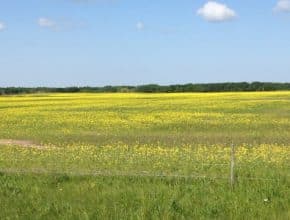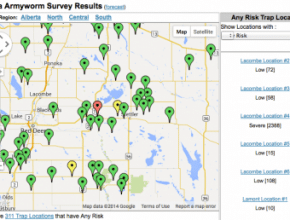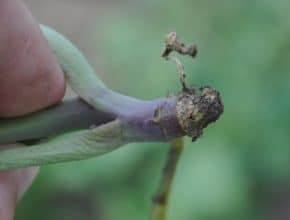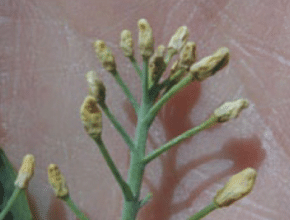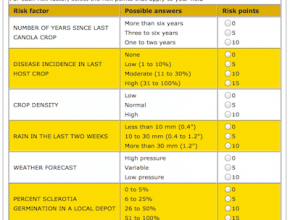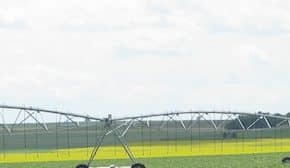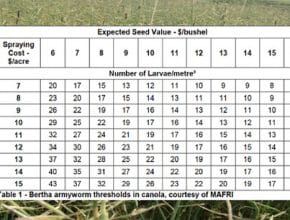Diagnosis: Ugly. A lot of canola crops are looking pretty sad, with small plants, low counts and a wide range of stages. This makes for difficult management decisions, including when to spray for sclerotinia stem rot — or whether to spray at all. Late fungicide. The application window for fungicide to manage sclerotinia stem rot closes at 50% flower (or…
July 16, 2014 - Issue 15
-
-
How well can you identify the causes of canola root damage? We have six photos for you, including the one above…
-
-
-
-
-
Hot, dry conditions the past number of days and variable field staging have made the decision to spray fungicide to manage sclerotinia stem rot even more difficult this year. Moisture is the key risk factor for sclerotinia stem rot. Without moisture before, during and after flowering, disease severity and the return on investment from fungicide will be lower than if…
-
Canola’s need for water is highest during the flowering growth stage, which means growers using irrigation have to provide more water during this stage. However, moisture at this stage also increases the risk of sclerotinia stem rot infection. Alberta’s irrigation scheduling strategy recommends less frequent and larger irrigation volumes during the flowering growth stage. This will provide the water the…
-
While insects are not a major threat in most fields at this point in 2014, diamondback moth larvae are around, cabbage seedpod weevil are still laying eggs, and bertha armyworm larvae have been found in some locations — although at very low levels for the most part. (See the Map of the Week.) Here is a review of thresholds for…

